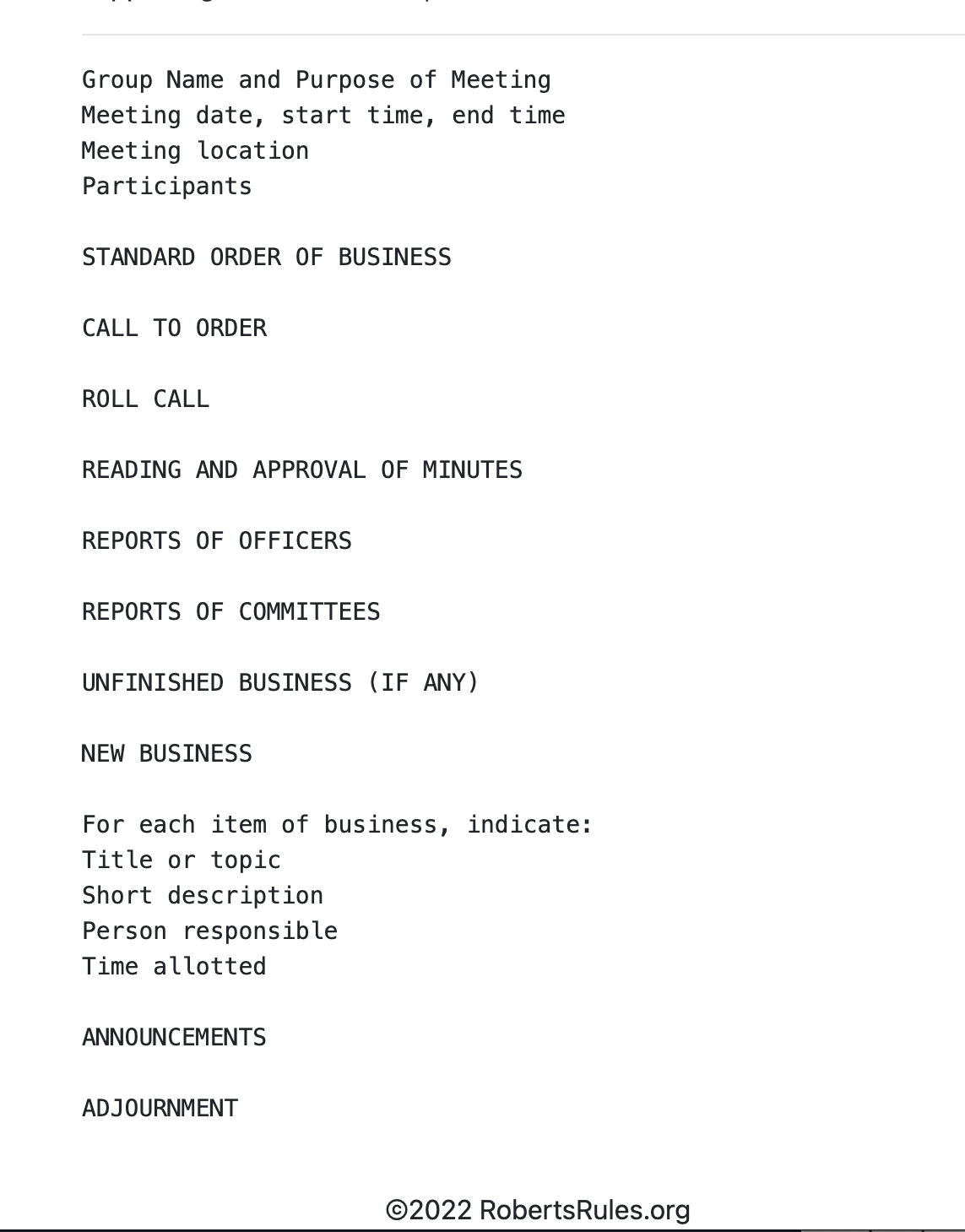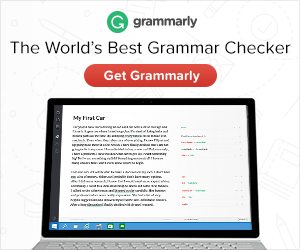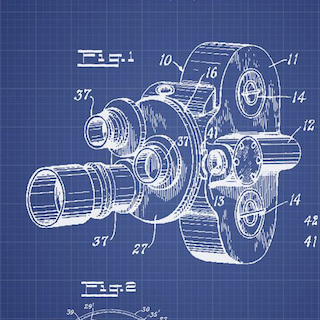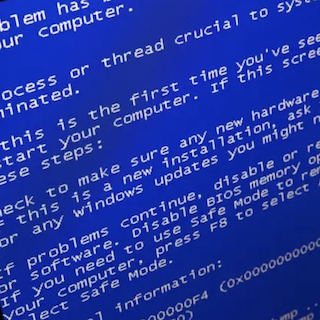The Minutes
What are the minutes?
The minutes are the written record of everything that happened during a company meeting. They bring up the key issues, motions proposed or voted on, and activities to be carried out.
Their objective is to provide an accurate and brief record of what happened during the course of the meeting. Meeting minutes can be used to inform people who were not able to attend the meeting. However the main purpose is to keep track of what was figured out during the meeting so that you can use it to make permanent records.
The minutes of a meeting are usually set out by a designated member of the group. (The secretary)
Under certain circumstances, meeting minutes serve a legal purpose. For example, with a board meeting, the minutes are a legal record of board activity and fulfill company law requirements.
Group # 1
to dive into
to bring up
to figure out
to go over
to follow up
Group # 2
to head in
to carry out
to show up
to hand out
to come up with
Where does the term “minutes” come from?
In fact, the minutes here have nothing to do with time, but rather small, as in tiny or “minute” (my-newt). Minutes in this sense first showed up in the early 18th century, possibly directly from the Latin expression “minuta scriptura”, meaning small notes or just minuta, meaning small from the preceding Latin. In other words, a brief or brief record of the meeting.
What do you know about the minutes?
Take a quick quiz in order to do a pre-check on your skills. It just takes 3 minutes and will help identify your weaknesses and show you where to focus.
Group # 3
to set out
to look forward to
to set up
Group # 4 – Verbs in motion with the preposition by.
to go by
to come by
to drop by
to swing by
to run by
-All just mean a quick visit.
Group # 5
to wrap up
to tie up
to wind up
– to end or finish something.
One of the greatest failures of every generation is that it refuses to read the minutes of the last meeting.
— David A. Noebel
Quite frankly, I am not very comfortable in chitchat. When I go to board meetings, I arrive two minutes before and leave when it’s over. I don’t stay for lunch or go early and have coffee.
— Lou Gerstner
I can tell you how bad our boards are… I don’t have to watch Saturday Night Live anymore; I just go to the board meetings.
— Carl Icahn
How does the overall mood of the quotes above sound?
What to avoid and NOT to put in the minutes.
Avoid changing tenses in your writing. Stay to the simple past tense.
Avoid recording the debate; just record the outcome.People like to debate, dive into evidence, research, and more. None of this needs to be recorded. The minutes should include the point that was brought up and the decision that was reached.
Avoid adding personal opinions or observations. Do not make your own comments. Stay to just the facts.
Avoid verbatim quotes. Minutes are not a legal binding transcript. Always summarize.
Avoid letting the meeting move on if you’re confused. If you miss a critical point, follow up and ask for clarification for the minutes before the meeting moves on to a new topic.
Avoid summarizing documents that are shared in the meeting. Attach them to the minutes and simply reference them by name and state how the document is used.
What to put in the minutes.
The date and time. Your template must always include the date, time, and location.
Meeting participants. Set out who attended and who was absent from the meeting. Note specific positions, such as the chairperson, secretary, committee members, or other titles that can be helpful for your organization.
Go over the minutes. Approval of the minutes from the previous meeting. This is common practice. Note any corrections that are made to the minutes from previous meetings here as well.
The meeting agenda. The meeting’s original agenda should serve as an outline for your minutes to head in. Such an agenda may include formal sections, such as a Call to Order, but this is not mandatory.
Vote counts. How do you figure out what to do? If an issue is put to vote, what is the issue? What member brought up the motion and who seconded? Did it pass or fail, and by what vote?
Tasks. Any action items that came up during the meeting, including which meeting participant is responsible.
Documents that are shared during the meeting. If something is handed out during the meeting, attach a copy to the minutes as well (provided there is no legal or confidential reason not to). For example, in a board meeting, there is sometimes a “closed session” attended by only certain board members. The details of this would be omitted from the minutes.
A recording of the meeting. If your meeting is recorded (video or audio), attach a link or file.
… more about meetings.
What is the Companies Act 2006?
CHAPTER 46
An Act to reform company law and restate the greater part of the enactments relating to companies; to make other provision relating to companies and other forms of business organisation; to make provision about directors’ disqualification, business names, auditors and actuaries; to amend Part 9 of the Enterprise Act 2002; and for connected purposes.
[8th November 2006]
Be it enacted by the Queen’s most Excellent Majesty, by and with the advice and consent of the Lords Spiritual and Temporal, and Commons, in this present Parliament assembled, and by the authority of the same, as follows:—
Basic Outline & Format of The Minutes
There is not just one standard, but here is a general outline to what you should include.
Organization Name and Logo Name of Meeting Date, Time & Location of Meeting
NAMES OF ATTENDEES AND ABSENTEES – Include names of presiding officers, names of absent board directors, names of any guests or staff members present, and note whether the meeting had a quorum
ORDERS OF BUSINESS
I. Unfinished Business
a. List the following:
i. Names of all persons reporting
ii. Names of all persons dissenting
iii. The results of voting
b. Include unresolved action items from past board meetings; this usually includes approving the minutes from the prior meeting
II. New Business
a. Include reports from:
i. The executive director or CEO
ii. Finance department
iii. Committees
iv. Program staff leads
b. Any additional business or supplements to the agenda
III. Future Action Steps a. Include who is responsible for what, and an approximate timeframe for completion
CLOSING
a. State the date and time for the next board meeting
b. Include the time of adjournment
c. Signatures by the secretary and board president
Spot the Mistakes
In the following example of the minutes, choose the correct phrasal verb. Take quiz below.
Board Meeting Minutes
Legal English Innovation SAS Golf Foundation
Board Meeting Minutes: June 7, 20xx
Cll 67 No 8-16 of 102, Bogota, Colombia
Board Members:
Present: Eric Froiland, Pinot Blanc, Tom Fazio, Arnold Palmer
Absent: Tiger Woods
Quorum present? Yes
Others Present:
Exec. Director: Pinot Noir
Other: Roland Garcia, Consulting Accountant
PROCEEDINGS:
· Meeting called to order at 9:00 a.m. by Chair, Eric Froiland
· April’s meeting minutes were amended and approved
CHIEF EXECUTIVE’s REPORT:
– Recommends that if we not able to find a new facility by the end of the year, the organization should terminate the lease. After brief discussion, Board agreed.
– Staff member, Phil Mickelson, and Bobby Jones headed at/to the National Golf Network meeting in Atlanta last month and followed up/by with a brief presentation. Both are invited back next year to dive on/in and give a longer presentation about our organization. After brief discussion, Board congratulated Blanc and asked them to pass on their congratulations to Jones as well.
– Froiland brought up/down that our organization must ensure its name is associated with whatever materials are handed out/by at that association’s meeting next quarter. The organization should generate income where possible from the materials, too.
– Fazio mentioned that staff member, Tiger Woods’s wife is ill and in the hospital. MOTION to send a gift and set up/out a fund for Tiger Woods’s wife, expressing the organization’s sympathy and support; seconded and passed.
FINANCE COMMITTEE REPORT provided by Chair, Eric Froiland:
– Froiland explained that consultant, Roland Garcia, went over/by the organization’s bookkeeping procedures and found them to be satisfactory, in preparation for the upcoming yearly financial audit. Garcia recommends that our company ensure the auditor provides a management letter along with the audit financial report.
– Froiland moved on/by to the highlights, trends and issues from the balance sheet, income statement and cash flow statement. Issues include that high accounts receivables require Finance Committee attention to policies and procedures to ensure our organization receives more payments on time. After brief discussion of the issues and suggestions about how to carry out/around payments on time, MOTION to accept financial statements; seconded and passed.
BOARD DEVELOPMENT COMMITTEE’s REPORT provided by Chair, Tom Fazio:
– Fazio reminded the Board of the scheduled retreat coming up in three months, and handed for/out a drafted retreat schedule for board review. MOTION to accept the retreat agenda; seconded and passed.
– Fazio presented members with a draft of the reworded By-laws paragraph that would allow members to carry in/out actions over electronic mail. Fazio suggested review and a resolution to change the By-laws accordingly. Palmer suggested that Fazio first seek legal counsel to figure up/out if the proposed change is consistent with state statute before diving over/in. Palmer agreed to accept this action and notify members of the outcome in the next Board meeting.
OLD BUSINESS:
– Palmer noted that he was working with staff member, Sam Snead, and heading in/out the direction of developing an information management systems plan, and that two weeks ago he (Palmer) had set out/up an email to the members including three resumes from consultants to help carry out/by the plan. In the email, Palmer asked members for their opinions to help select a consultant. Palmer followed up/back with the members for their opinions (NOTE: Fazio noted that he was also a computer consultant and was concerned about conflict of interest in his Board role regarding this selection, and asked to be abstained from this selection. Members agreed.) The majority of members agreed on Lease-or-Buy Consultants. MOTION to enter into/out business with Lease-or-Buy Consultants; seconded and passed.
– Froiland announced that he had recently hired a new secretary, Margaret Abbott.
ASSESSMENT OF THE MEETING:
– Blanc noted that the past three meetings they set up/out, have run over the intended two-hour time slot by half an hour. He asked members to be more mindful and focused during discussions, and suggested that the Board Development Chair take an action to figure out/for solutions to this issue and set out/up a memo. Chair, Fazio, agreed.
· Meeting adjourned at 9:30 p.m.
· Minutes submitted by Secretary, Margaret Abbott.
May, Must, Will & Shall
Remember, these terms have a very different use in legal meaning.
May: a legal right
Must/Will: a legal obligation
Shall: a legal obligation on a person/party
Robert’s’ Rules of Order:
Robert’s Rules of Order is a set of rules first published in 1876 by Henry M. Robert to run effective, orderly meetings with maximum fairness to all members. In addition to informational resources, RobertsRules.org provides software tools to help organize and run meetings and groups.
Robert’s Rules is a time-tested manual of “parliamentary procedure” for conducting business at meetings and public gatherings. The basic handbook of operation for most groups, it provides common procedures for deliberation and decision-making with the full participation of the membership body.
Sample Agenda

Did you know that people who participate in meetings make more money?
Close your eyes and imagine sitting at a boardroom table with a group of your peers.
Next, imagine yourself raising your hand. Then ask a question.
If you are prepared and visualize yourself taking action, that is your first step towards increasing your participation and moving forward in your professional career.
Did you know?
Fun Meeting Facts
(Pronouncing “precenta”. Push the percent and of together to have a more native sound)
Statistics about time spent in meetings:
- 41% of meetings last between 31–60 mins
- 39% of meetings last between 16–30 mins
- 4% of meetings last over 91+ mins
- 3% of meetings last less 0– 5 mins
- 13% of meetings last between 61–90 mins
Save time. Send a proxy.
And read the minutes later…
Verb Collocations
Verb + Infinitive form
to offer
to decide
to refuse
to hesitate
to fail
to plan
to hope
to please
to arrange
to seem
to want
to prepare
Examples
to offer to negotiate
to decide to sign
to plan to resign
to hope to meet
to prepare to find
to seem to be
Verb + ing form
to suggest
to practice
to postpone
to deny
to admit
to discuss
to risk
to complete
to finish
to avoid
to consider
to understand
Examples
to suggest reviewing
to discuss defaulting
to consider offering
to risk losing
to finish setting out
to postpone performing
Some/Any Advice
What is the difference between some and any?
Well that is an interesting question. Both of them are positive, and both of them are unidentified.
The difference is that some is real, and any may or may not exist.
For example:
If you have any questions or comments… (maybe you have questions, maybe you don’t)
If you have some questions or comments… (you do have questions, but they are unidentified)
So, if you think your email or letter was very clear, you outlined everything, and left the reader knowing exactly what to do, you probably want to use any, instead of some. However if you feel there certainly are questions, but you just don’t know what they are, use some. In either case, avoid using doubts, or a doubt, as this brings a negative connotation in English.
Tips to help you speak & write more clearly.
Check out the full article here on Legal English Writing Tips
We can teach you legal English.
Learn to make beautiful PowerPoints in minutes.
About the Author
Eric Froiland
Eric is a legal English teacher from the United States and has been based out of Bogota, Colombia for the last 10 years. He is the owner and founder of Legal English Innovation SAS, which is recognized as the top legal English academy in Colombia and is an official Test of Legal English Skills (TOLES) examination center.



